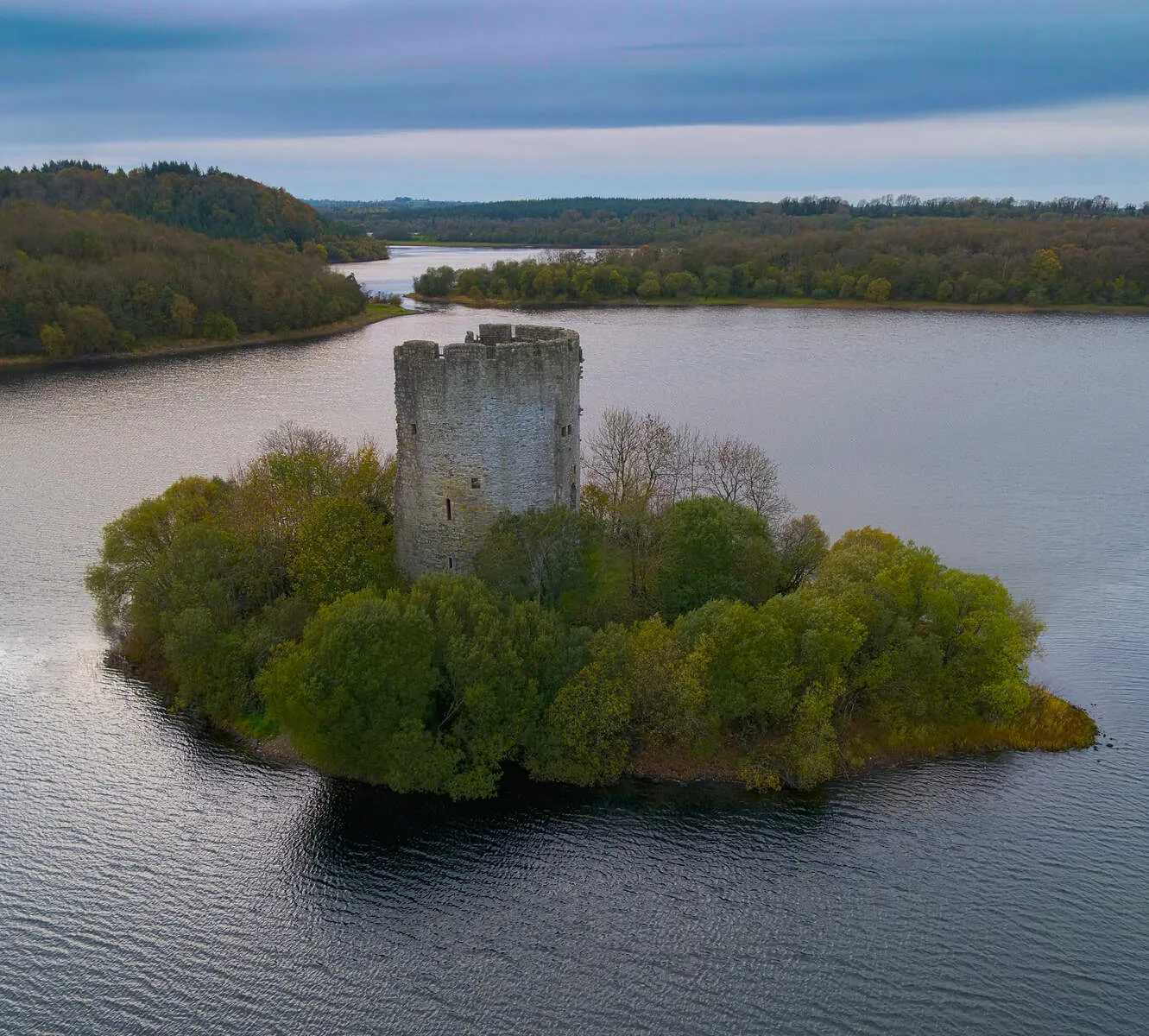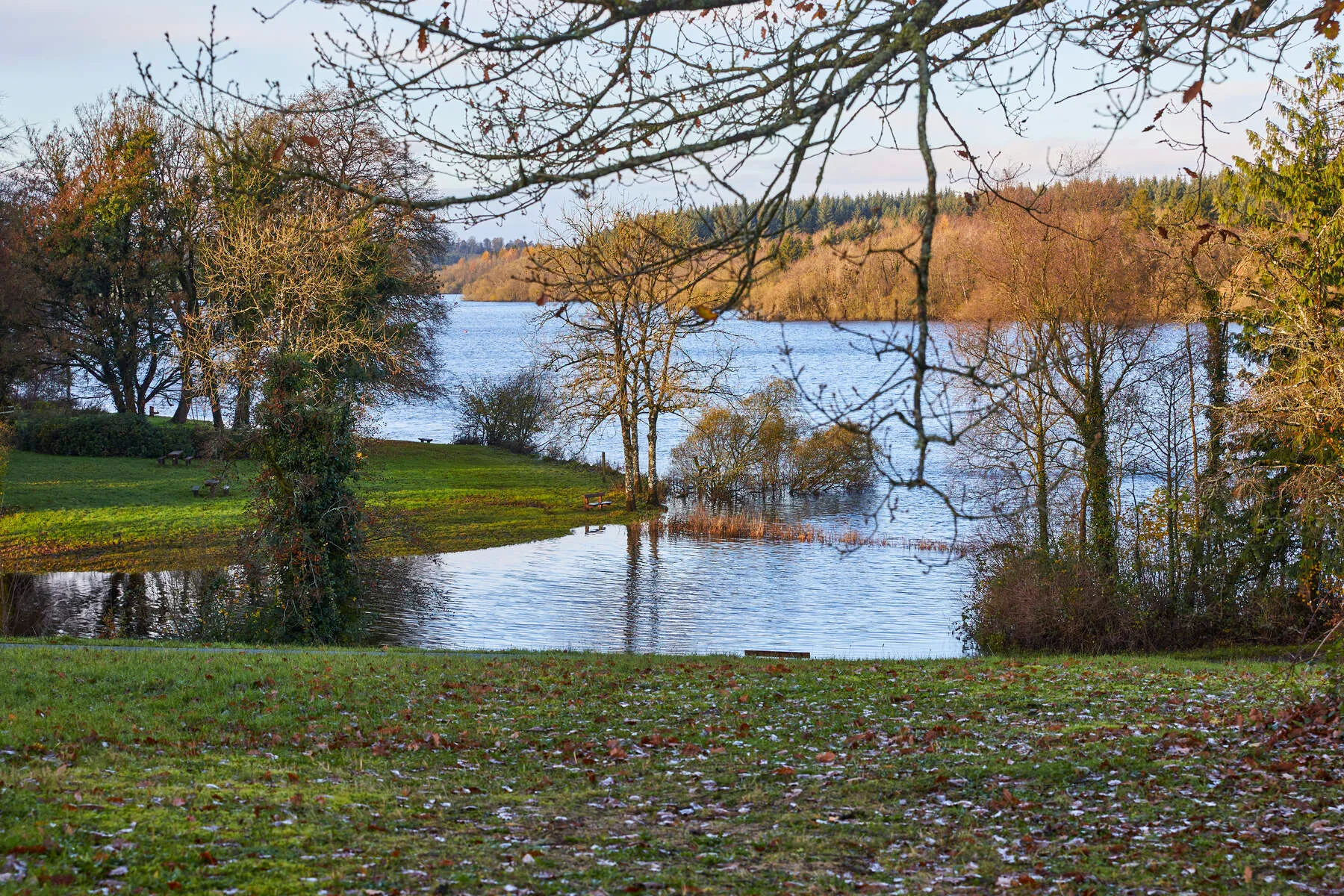Killeshandra, County Cavan, cradled among rolling drumlins and mirrored lakes, is where Ireland's Hidden Heartlands breathe most vividly. Part of the UNESCO Cuilcagh Lakelands Geopark, this riverside gem invites you to wander trails fringed with whispering pines or cast a line into waters teeming with trout. Picture sunsets over Town Lake - host to roaring powerboat championships in summer - or tracing Killykeen Forest's paths where red squirrels dart between ancient trees. History lingers too: the crumbling Jacobean church, built when Oliver Cromwell still loomed large, and Clough Oughter Castle, its stone towers guarding Lough Oughter like a medieval sentinel.
In June, the annual Killeshandra Camino Calling transforms the town into a pilgrimage of camaraderie, as walkers trace a 35.5km path dotted with storytellers and fiddle sessions. Come autumn, locals gather at the Loop Trail's shores to recount tales under canopies of gold-leafed woodlands. Whether kayaking past rare birdlife in Lough Oughter SPA or sipping tea in a thatched pub where uilleann pipes hum through open windows, Killeshandra wraps you in an unpretentious rhythm of nature and tradition just 90 minutes from Dublin's buzz. This is Ireland as it once was - and still is.
Jump to section:
Things to See and Do
Killeshandra Camino Calling Walking Festival
Annual event in June featuring a 35.5km Camino-style walk with refreshment stops and cultural celebrations in UNESCO Cuilcagh Lakelands Geopark.
Killeshandra Loop Trail
5.9km easy walking loop starting at Town Lough car park with purple waymarking, offering scenic views and a 60m ascent (dogs permitted).

Clough Oughter Castle
15th-century castle ruins on Lough Oughter, accessible by boat from Killeshandra's shores. Offers insights into medieval Irish history.
Jacobean Church Ruin (1688)
Substantial 17th-century ruin built in 1688, showcasing historic Killeshandra architecture near the town center.
Historic Rath Church
T-shaped Renaissance neo-classical/Gothic church from the 18th century with a south-facing transept and protected architectural significance.
Lough Oughter Special Protected Area (SPA)
EU-recognized Natura 2000 site since 2010, featuring wetlands and woodlands in the Erne catchment region. Home to rare bird species.

Killykeen Forest Park
Forest park with trails for hiking/cycling, fishing, pony trekking, and access to Green Lake. Part of UNESCO Cuilcagh Lakelands Geopark.
Dumb Lough & Tullyguide Lough
Pictureque loughs offering boating, birdwatching, and trails through UNESCO Cuilcagh Lakelands Geopark.
Town Lake & All-Ireland Power Boat Championships
Host to annual All-Ireland Power Boat Championship in June. Popular for watersports year-round on Killeshandra's lake.
Rockfield Lake
Angling destination known for trout populations and nearby watersports facilities southwest of Killeshandra.
Killeshandra Graveyard
Protected graveyard with memorials dating to the 18th–19th centuries, including works by sculptor William Kidwell for the Hamilton family.
Killeshandra Lake & Forest Walk
6km moderate trail starting at The Strand with diverse flora/fauna (red squirrels, pine martens) and access to Drumlane Abbey.
Getting There
Air
Killeshandra is within 90 minutes of Dublin Airport.
Bus
-
Local Link route 929 serves the town with several buses to and from Cavan town and other local places.
-
The town is also served by several Local Link Cavan Monaghan door-to-door routes.
-
Bus Éireann serves the town once weekly on Tuesdays, with route 465 providing a return journey to Cavan via Arvagh and Ballinagh, and a one-way journey to Carrigallen.
Car
Killeshandra is located in County Cavan, Ireland. You can drive to Killeshandra via the N3 or N55 roads.
-
Distance from Dublin: 77 miles NW
-
Distance from Enniskillen: 28 miles S
-
Distance from Clones: 19.5 miles SW
-
Distance from Cavan: 11 miles W
Rail
The nearest train station is likely to be in Cavan or Longford, and you can take a taxi or bus from there to Killeshandra. Historical note: Killashandra railway station was once the terminus of a short branch railway line between Cavan and Crossdoney on the Midland Great Western Railway line. This line is now closed.
Events & Festivals 2025
There are currently no events listed. If you would like to add an event, please contact us.
History
Killeshandra's history dates back to the medieval period, with its name derived from the Irish "Cill na Seanrátha", meaning "church of the old rath". The church was first noted in Papal registers during the 14th century. In 1610, Sir Alexander Hamilton was granted lands by the Crown to build a strong bawn and create a Protestant community around the barony of Tullyhunco, marking the beginning of the town's early development.
The 17th century saw significant events shape Killeshandra's history. The 1641 rising led to the burning of the township, followed by the surrender of the Hamiltons and their Scottish neighbours to the Cavan O'Reilly rebel army. After the Restoration period, Sir Francis Hamilton regained control of the area and built a new market town with Scottish settlers and migrant French Huguenot exiles, who brought their industry and linen skills.
The historic rath church, with its unique T-shaped design and Renaissance neo-classical style, is a notable architectural feature. The church was remodelled in 1688 as a memorial to the Hamilton family, and its remains can still be seen today. Some of the earlier Hamilton family memorials were later moved to the new Anglican church built in 1842.
Killeshandra's economy thrived in the 18th century, earning it a reputation as a "Linen Town". The local cottage flax spinning and weaving industry expanded, with many households involved in the production of linen. However, the town's failure to adopt industrial methods of linen production led to hardship and destitution for many local flax growers and producers.
The 19th century saw the establishment of the Drummully Co-operative Society in 1896, which marked the beginning of the dairy industry in Killeshandra. The society built a creamery, and by March 1898, it had become known as the Killeshandra Co-operative Agricultural Society.
Notable historical figures associated with Killeshandra include Sir Alexander Hamilton, Sir Francis Hamilton, and Philip O'Reilly, who played significant roles in shaping the town's history. Visitors can explore the town's many historical buildings, monuments, and archaeological sites, including the Market House, which features a stone plaque describing its erection.
The surrounding area is also steeped in history, with Lough Oughter Castle, built by the Anglo-Normans in the 13th century, situated on an island in the middle of Lough Oughter. The castle was later captured by the O'Reilly clan and used as a prison during the Middle Ages. Owen Roe O'Neill, leader of the anti-English revolt of the 1640s, died at the castle in 1649.